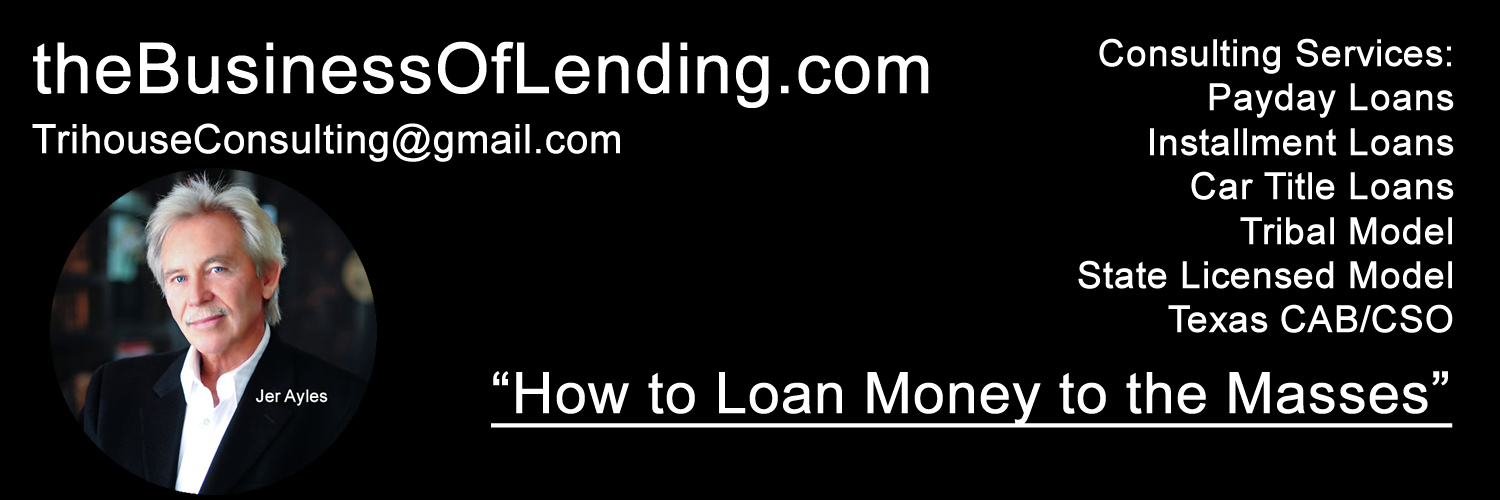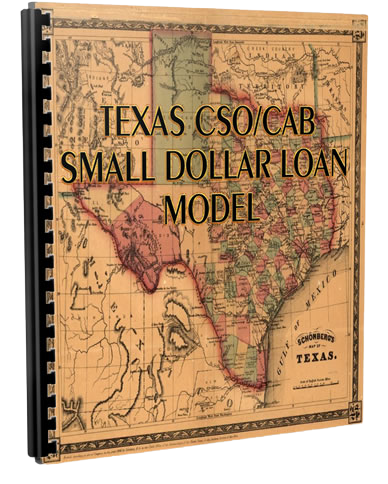Texas’s Credit Access Business (CAB) model offers a unique and lucrative profit-sharing arrangement that mutually benefits both the CAB and the 3rd-party Lender.
This framework allows 3rd-party lenders to leverage the expertise and customer base of CABs while CABs benefit from the capital these lenders provide.
Let’s delve into how the profit-sharing mechanism typically works, focusing mainly on the 9.99% A, additional fees like NSF (Non-Sufficient Funds), and late fees that 3rd-party lenders may earn.
Risk and Reward Allocation
APR Distribution
In a typical arrangement, the 3rd-party Lender earns a 9.99% APR on the funds loaned to the consumer.
This APR is distinct from the higher APRs associated with CABs and serves as a stable, relatively low-risk revenue stream for the Lender.
Additional Fee Participation
In addition to the 9.99% APR, 3rd-party lenders often also share in other fees, such as NSF and late fees.
These fees can significantly boost the Lender’s profitability, especially when considered across a high volume of loans.
Revenue Collection by CABs
Efficiency and Expertise
CABs are responsible for collecting both the principal and interest payment and any NSF/late fees on behalf of the 3rd-party Lender.
The CAB’s established customer service and debt collection infrastructure ensures that these payments are collected efficiently, minimizing defaults and maximizing profitability.
Dual Benefit
While CABs do the legwork of collecting the fees, they are also vested in ensuring the collection process is efficient.
An effective collection process improves the CAB’s bottom line and incentivizes the 3rd-party Lender to continue partnering with the CAB.
Mutual Advantages in Profit-Sharing
Stable Revenue for 3rd-Party Lenders
The 9.99% APR and the additional fees offer 3rd-party lenders a stable and predictable income, which can be especially appealing given that CABs shoulder much of the operational workload and customer interaction.
Increased Capital for CABs
For CABs, the benefit lies in having access to the capital provided by 3rd-party lenders. [Reach out to Jer@TheBusinessOflending.com for details.]
This allows CABs to originate more loans and thus generate more revenue through their high APRs and service fees.
Enhanced Business Relationships
This profit-sharing arrangement fosters a healthy, long-term business relationship between 3rd-party lenders and CABs. It creates a symbiotic relationship where both entities profit while distributing operational responsibilities and risks.
The profit-sharing arrangement in the Texas CAB model provides a win-win scenario for both the CAB and the 3rd-party Lender.
With a reasonable APR of 9.99% and a share in additional fees like NSF and late fees, 3rd-party lenders enjoy a lucrative, low-risk revenue stream.
Meanwhile, CABs benefit from the operational efficiencies of this model and the ability to access more capital to originate loans.
Both parties, therefore, have strong incentives to maintain this collaborative and profitable relationship. [See me for details.]
For Consumers
Unpacking the Benefits for Consumers in the Texas CAB Model
The Credit Access Business (CAB) model in Texas provides many benefits for consumers.
Understanding these benefits can offer valuable insights into how this lending model positively impacts borrowers. Let’s dive deeper into each of these advantages:
Increased Access to Diverse Loan Products
Variety of Options
The CAB model often leads to a more diverse marketplace for loans.
Since the Credit Access Business acts as an intermediary and facilitator for multiple third-party lenders, borrowers get a more comprehensive array of loan products to choose from.
Whether you need a short-term loan to cover an emergency expense or a long-term loan for home improvement, the chances are high that you’ll find a loan product that meets your needs.
Catering to Different Credit Profiles
Because CABs may work with various third-party lenders, a broader spectrum of risk profiles can often be accommodated.
Borrowers with less-than-perfect credit histories will find loan products suited to their financial situations.
Streamlined Application Process
The CAB will offer a streamlined loan application process, where a single application can be used to apply for multiple loan products.
This saves time for consumers and increases the likelihood of finding a loan that best suits their financial needs.
Transparency and Consumer Protection
Regulatory Adherence
The CAB model operates under the purview of Texas state laws, which are crafted to protect consumers.
CABs must be licensed and regulated by the Office of Consumer Credit Commissioner (OCCC).
This ensures a certain level of compliance and standardization that safeguards consumers against fraudulent practices.
Clear Terms and Conditions
Another benefit of the CAB Model is its level of transparency to borrowers.
CABs must provide clear, concise, and transparent loan agreements [Try getting THAT from your local Stagecoach bank or credit union!], making it easier for borrowers to understand the terms and conditions, including interest rates, fees, and repayment options.
Informed Decision-Making
With transparent terms and the safety of state regulations, consumers can make more informed decisions.
Knowing the details upfront allows borrowers to more accurately assess the cost and affordability of a loan, reducing the risk of taking on unmanageable debt.
Enhanced Customer Service
Specialized Expertise
Since CABs specialize in subprime loan acquisition, underwriting, and servicing, their expertise in these areas is often higher than that of traditional lenders and banks.
This can translate to a smoother, more efficient customer experience from application to loan closure.
Personalized Service
Many CABs offer personalized loan servicing that includes prompt and proactive customer support.
Whether through easily accessible customer service lines, chat support, or in-person consultations, the focus is often on ensuring the consumer feels supported throughout the loan lifecycle.
Educational Resources
To add value to their services, some CABs also offer educational resources and tools to help borrowers understand loan management, budgeting, and financial planning.
This fosters a better customer relationship and empowers borrowers to make sound financial decisions.
Conclusion for Borrowers
For borrowers in Texas, the CAB model with third-party lending brings forth increased accessibility to a variety of loan products, enhanced transparency, and superior customer service.
These advantages contribute to a more consumer-friendly loan marketplace, enabling borrowers to manage their financial needs better.
In Closing
The Credit Access Business (CAB) model in Texas presents a compelling business opportunity in the lending arena for 3rd-Party lenders, consumers, regulators, and CABs.
Its distinct combination of robust revenue potential attributed to high APRs to offset the risks of lending to subprime borrowers having nowhere else to turn when faced with a sudden financial emergency, a streamlined approach to regulatory compliance, and its benefits to consumers make it attractive.
Add to this the inherent risk mitigation strategies and a keen understanding of local market dynamics, and it’s clear why the Texas CAB Model holds such allure.
For businesses aiming to capitalize on the lending space, the CAB model in Texas establishes a pathway to substantial profitability and superior ROI.













